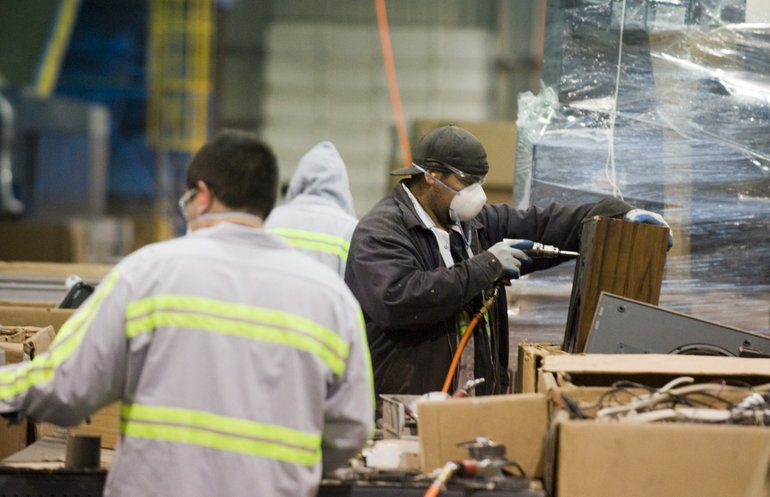To see the full multimedia package for this story, including videos, a photo gallery and an interactive graphic, visit www.columbian.com/growth.
The types of jobs held by Clark County workers were transformed in the first decade of the 2000s — to sometimes devastating effect.
The recession of 2001, marked in part by the bursting of the telecom bubble, “led to significant job losses in key high-wage industries” in Clark County, according to a recent report by Scott Bailey, regional economist with the state Employment Security Department. One-third of the county’s electronics and telecom jobs vanished, and the jobless rate more than doubled.
By mid-2003, job growth in the county picked up again.
It was a mirage.
Like the greater U.S. economy, the county’s expansion was “largely reliant on the housing bubble and rising debt instead of new manufacturing investment,” according to Bailey. “Manufacturing, which made up 20 percent of county jobs in 1990, contributed only 9 percent in 2009.”
The Great Recession that followed the country’s financial crisis — triggered, in large part, by high-stakes gambling on Wall Street –wiped out more than 10,000 Clark County jobs from 2008 to 2011, or roughly 7 percent of the county’s non-farm job base — “on par with the state,” Bailey wrote, “but more than the nation.”
Construction workers were hit particularly hard as that sector shed about 30 percent of its jobs. Manufacturing didn’t fare much better, losing roughly 20 percent. In February 2011, with the county’s jobless rate at 12.9 percent, more than 28,000 Clark County residents were unemployed and looking for work.
Demand, training, education
In the aftermath of Clark County’s economic troubles, an important question looms: Do we have too many people trained for jobs that have disappeared, and too few possessing skills to work in growing areas?
Lisa Nisenfeld, executive director of the Southwest Washington Workforce Development Council, said she believes the county is suffering from both a lack of demand from consumers and an off-balance work force.
If shoppers reached into their wallets again, that would spur private companies to hire.
But some Clark County companies can’t find the workers they want, even now, especially in electronics and other high-tech fields.
The biggest weakness of the county’s work force is its lower levels of education, Nisenfeld said. Census data show that 15.5 percent of Clark County’s adults 25 and older have a bachelor’s degree. That’s lower than the state (19.9 percent) and lower than the U.S. (17.6 percent).
John Marck, president of Sharp Microelectronics of the Americas in Camas, has said that Clark County’s low educational attainment, and not enough focus on science and technology, has forced him to look beyond the region to recruit new hires.
The Clark County High Tech and Community Council, of which Marck is past president, helped successfully lobby the state Legislature to expand high-tech offerings at Washington State University Vancouver.
Meanwhile, some private employers are taking training into their own hands, among them Vancouver sawmill Columbia Vista, where each employee “has a custom-designed training plan,” said Bob Lewis, the company’s president. Columbia Vista spends $300,000 annually on training and education programs for its workers.
But the company is not going it alone. Through a partnership with Clark College, for example, it brings an instructor on site each year to walk workers through the principles of pneumatics, hydraulics and electricity.
Such partnerships and investments in training are likely key to preparing Clark County’s work force for the jobs of the future.
But there’s more work to be done, local leaders say, despite a financial shortfall that is spurring major cuts to state education funding.
“The WSU program, generally speaking, is just getting started, but you’ve got to start somewhere,” Marck said. The Clark County High Tech and Community Council, a low-profile industry advocacy group, still wants to improve technical education from grade school through the university, in order to bring more high-tech offerings to WSUV.
Added Nisenfeld: “We need to invest further in education to bring up our work force readiness on all levels, from entry-level people up through the university” system.




